Home Remedies To Reduce Redness On The Face | Prevention Tips
Get rid of the redness on your face with the most potent natural ingredients.
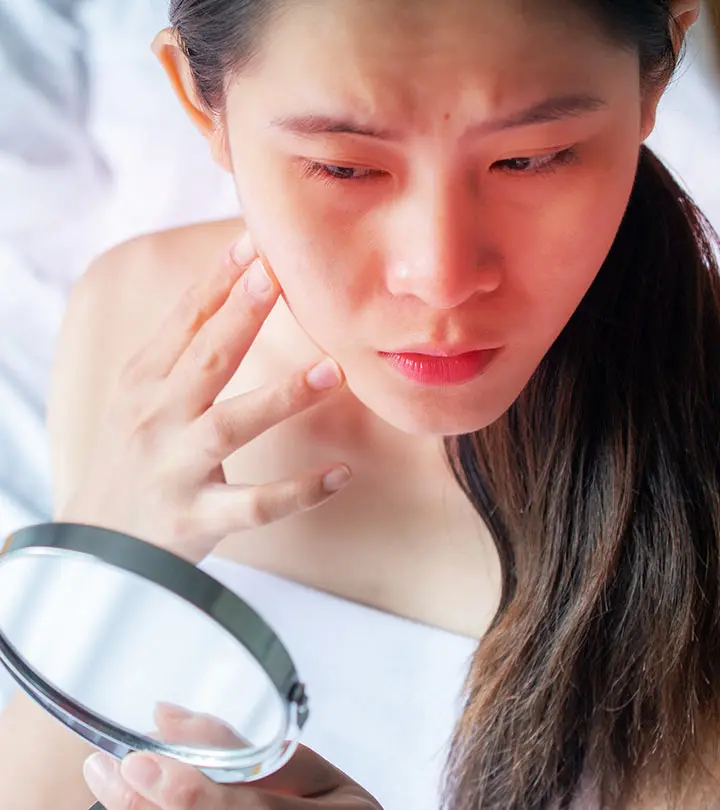
Image: Shutterstock
Redness on the face can be caused by a wide range of factors. Sunburn, allergic reaction to a medication, overconsumption of alcohol, or even consumption of spicy food can cause your face to become red. But sometimes, redness may also be indicative of an underlying medical condition and needs to be checked by a doctor immediately. The good news is there are some simple remedies you can use to reduce the redness on your face. In this article, we explore some of the causes behind a red face and a few remedies one can try at home.
In This Article
What Causes Redness On The Face?
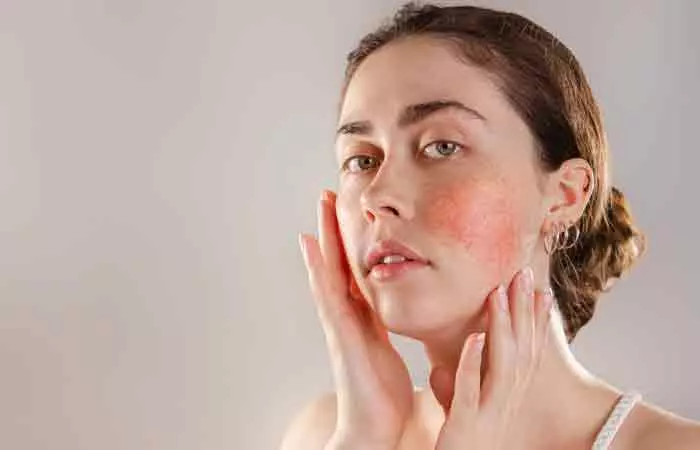
Your face becomes red when the blood vessels dilate, causing more blood to rush to your skin. Redness may be observed not only on your face but also around your neck. This sudden redness of your skin is called flushing or transient redness. It can be a result of long exposure to sunlight, causing sunburn or a strong emotion like anger, embarrassment, stress, or any extreme emotional state.
A study conducted on 4,088 adults reported that the neck or the shoulders (66.2%) was the most frequent sunburn location, followed by the face or head (52.6%), arms or hands (40.1%) and back (24.0%). Also, men were more likely to report sunburn on their face or head (54.7%) than women (50.7%).
It can also be attributed to other medical reasons, such as menopause and rosacea. Rosacea is a condition that causes the blood vessels under the skin to dilate, making your skin look red. Studies show that the causes of rosacea may be traced back to seborrheai A type of dermatitis that causes red skin and scaly patches on the scalp and in the oily areas of the body. , bacterial infection, Demodexi Tiny parasitic mites living in or around hair follicles and oil-secreting glands of mammals. Also known as eyelash mites or skin and face mites. infestation, etc. (1). Other skin conditions like dermatitis may also cause facial redness.
Other factors that cause redness of face are a genetic predisposition to redness of the skin, allergic reaction to certain facial products, exposure to heat or excess sunlight, over-exfoliation of skin, breakouts or acne, and excessive consumption of alcohol (2).
 Quick Tip
Quick TipIn the following section, we will look at a few natural remedies that can help reduce facial redness.
Key Takeaways
- Facial redness might be caused due to a blood rush or dilation of the blood vessels.
- The anti-inflammatory properties in lavender oil help reduce swelling and redness.
- Honey has anti-inflammatory properties that help treat skin lesions and rashes.
- Keep your skin well-hydrated and avoid excessive alcohol consumption.
- Consult a dermatologist before using products or medical treatments to reduce redness.
Natural Remedies For Facial Redness
1. Honey
Honey has been used for ages to treat skin conditions and possesses wound healing and anti-inflammatory properties (3). It can help heal any lesions or rashes that may appear on your skin.
You Will Need
- 1 tablespoon of honey
- Sterile gauze
What You Have To Do
- Dab some honey on the sterile gauze.
- Apply it over the areas where the redness occurs.
How Often You Should Do This
Apply honey 3-4 times a day.
2. Aloe Vera
Aloe vera possesses anti-inflammatory and wound healing properties
(4). Hence, reduce the red patches that appear on your face and promote faster healing. It also may help lock in skin’s moisture, keeping skin healthy and hydrated. It is also one of the popular home remedies for allergies as it can relieve itching, soothe the skin, and expedite the healing process.
You Will Need
An aloe vera leaf
What You Have To Do
- Extract some gel from the aloe vera leaf.
- Apply the gel to the red patches on your skin.
- Leave it on overnight and wash off when you wake up.
Note:
You may also benefit from aloe vera’s anti-inflammatory properties by consuming it in the form of juice. However, do so only on the recommendation of your doctor.
How Often You Should Do This
Repeat this every night until the redness reduces.
3. Chamomile Tea
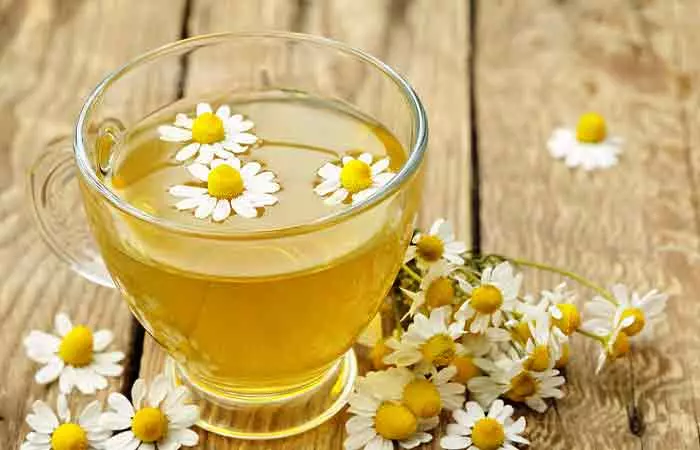
Chamomile tea is commonly used to treat skin problems and has anti-inflammatory properties (5). It can help in decreasing inflammation on your skin, which, in turn, reduces redness.
You Will Need
- Chamomile tea bags
- A few cups of water
What You Have To Do
- Boil a few cups of water and steep 2-3 chamomile tea bags in it.
- Cool this decoction and use it to wash your face.
- Pat your face dry.
How Often You Should Do This
Repeat this two times daily.
4. Cucumber
Cucumber is great for skin hydration and is a rich source of phytochemicalsi Chemical compounds produced by plants to fight against infections caused by bacteria, fungi and viruses. that reduce the appearance of lesions and acne (6). Hence, it may also help in reducing facial redness. It also leaves the skin looking clearer and moisturized. It can be very calming on the skin too.
You Will Need
1 ripe cucumber
What You Have To Do
- Grate the cucumber.
- Use this pulpy mixture as a face mask by applying to the areas with redness.
- Leave it on for 15 minutes and wash with plain water.
How Often You Should Do This
You can apply this paste 3-4 times a week.
5. Yogurt
Yogurt contains probiotics. A study showed that oral probiotics could enhance skin barrier function and reduce skin sensitivity (7). This may reduce the appearance of rashes and redness on your face.
You Will Need
- 2 teaspoons of yogurt
- 1 teaspoon of lemon juice
What You Have To Do
- Mix the yogurt and lemon juice in a small bowl.
- Apply the paste to the problem areas on your face.
- Rinse with water.
How Often You Should Do This
Use this paste two times a week.
Note: Lemon can cause allergic reactions in some people. Make sure to carry out a patch test before using this remedy.
6. Green Tea Soak
Green tea contains catechins that exhibit anti-inflammatory and antifungal properties (8). These properties may help reduce the intensity of red patches and irritation, placing it among the popular home remedies for rosacea and other skin disorders. It can be applied on all skin types including sensitive skin.
You Will Need
- 2 teaspoons of green tea leaves
- Boiled water
- Clean washcloth
What You Have To Do
- Boil a bowl of water and steep two teaspoons of green tea leaves for 5 minutes.
- Refrigerate the strained decoction for a short while and soak the washcloth in it.
- Wring it and place it on your face for 10 minutes.
- Wash your face with plain water.
How Often You Should Do This
Repeat this daily until the redness disappears.
7. Petroleum Jelly
Petroleum jelly contains a compound called petrolatum that enhances the skin’s barrier repair function and exhibits antimicrobial properties (9). These properties can help fight any infection that may cause facial redness.
You Will Need
1 tablespoon of petroleum jelly
What You Have To Do
- Apply a tablespoon of petroleum jelly on the affected areas.
- Leave it on overnight and wash off with a mild facial cleanser.
How Often You Should Do This
You can repeat this every night until the redness subsides.
8. Lavender Oil
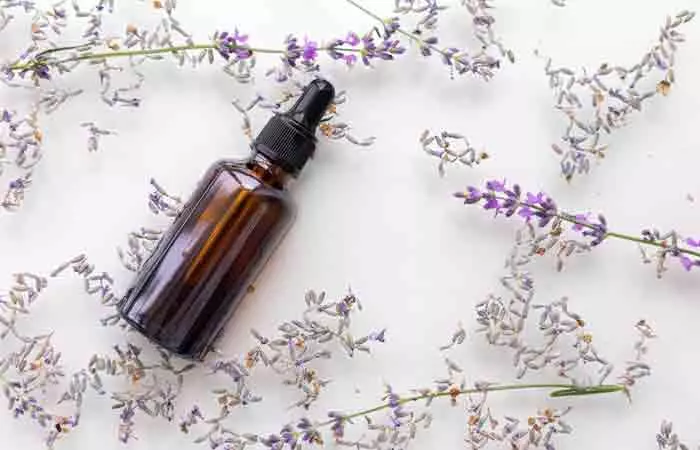
Research shows that lavender oil possesses antifungal, anti-inflammatory, and antimicrobial properties (10). These can help in fighting fungal or bacterial infections that may cause facial inflammation and redness.
You Will Need
- A carrier oil
- 2-3 drops of lavender oil
What You Have To Do
- Dilute a few drops of lavender oil with a few drops of olive oil.
- Dab it on a cotton ball and apply it to the affected areas.
- Rinse your face thoroughly after 10 minutes.
How Often You Should Do This
Do this 2-3 times daily.
9. Coconut Oil
Sometimes, an infection caused by a fungus or bacteria can cause your skin to look inflamed or red. Coconut oil contains lauric acid that exhibits antifungal properties (11). This may help in skin soothing and fight any skin infection that may cause facial redness.
You Will Need
Virgin coconut oil
What You Have To Do
- Take a teaspoon of slightly warm virgin coconut oil and apply it to the affected areas.
- Leave it on for about an hour before washing it off.
How Often You Should Do This
Apply coconut oil on the red patches two times a day.
10. Cold Compress
Cold compresses can help soothe inflammation or rashes on your skin, thereby reducing facial redness (12).
You Will Need
- Ice water
- A washcloth
What You Have To Do
- Soak the washcloth in ice-cold water and wring out the excess.
- Place it on the affected areas for about 10 minutes.
How Often You Should Do This
Repeat this two times a day.
These were a few home remedies that can be used to reduce the appearance of red patches on your face. We will now discuss the medical treatment options available to treat the redness of the skin.
Medical Treatment Options
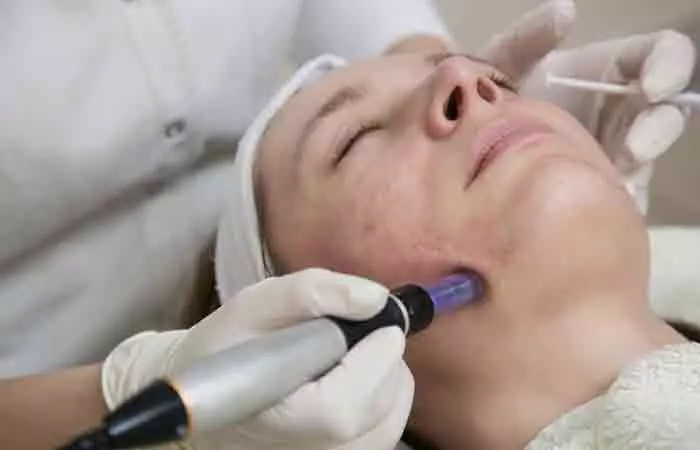
If you have red patches on your skin, your dermatologist may suggest the following medications:
- Brimonidine tartrate 0.33% gel is a medication that is approved for use in the case of recurrent erythemai A skin reaction causing redness due to inflamed blood capillaries near the skin surface triggered by an infection or medicines. that is associated with rosacea (13). It is known to have a vasoconstrictive effect, which means that it tightens blood vessels in the skin and provides ultimate rosacea relief to reduce the redness on your face.
- Azelaic acidi A naturally occurring acid in grains (wheat, rye, barley) used as a medicine to treat pimples and acne swelling. has an anti-inflammatory and comedolytici A form of vitamin A medication that prevents the accumulation of oil and skin cells in the pores and helps reduce acne scars. effect on breakouts and acne. This can also reduce the redness on your face.
- Metronidazole and doxycycline are antibacterial drugs that can kill bacteria on your skin and reduce redness and swelling associated with infections (15), (16).
Lisa R. Marshal, a blogger and a wellness practitioner, shared her experience of using a cream containing benzoyl peroxide to reduce the redness on her face caused by rosacea. She said, “That night I applied the cream to my clean face all over the rash. The following morning it looked and felt less irritated. Within less than a week the entire rash was gone! The redness that had previously been so persistent had faded (i).”
These medicines can take a few weeks to a few months to resolve the redness of your skin, depending on the severity. In addition to these medications, you should also have a balanced diet, stay stress-free, exercise regularly, and maintain a consistent skincare routine for best results. Your doctor may also recommend the following medical procedures to reduce redness of skin or rosacea:
- Laser therapy: This procedure employs the use of laser light or intense pulse light to help diminish erythema, thereby reducing the redness of skin (17).
- Dermabrasion: This procedure involves the use of a wire brush to scrape off or abrade the surface of the skin that is affected (18). However, this method can cause deep cuts, scarring, and, in some cases, permanent color change.
 Quick Tip
Quick TipIn minor cases, you also may try reducing the redness on your face overnight. Learn more below.
How To Reduce Redness On Face Overnight?
Start by cleansing your face with a mild, non-alcoholic cleanser to remove dirt and impurities. Then apply a cold compress or ice wrapped in a cloth to your face to constrict the blood vessels and reduce inflammation. You may then apply aloe vera gel to the affected areas to soothe the skin. The gel is known for its anti-inflammatory properties (4). Alternatively, you also may place a cooled chamomile tea bag on the red areas for a few minutes for relief (5).
Avoid applying any makeup until the redness subsides. Opt for a hypoallergenic, fragrance-free moisturizer to keep your skin hydrated. Lastly, ensure you sleep on a clean pillowcase made of natural fibers like cotton. This helps minimize irritation. But if the redness persists or worsens, consult a dermatologist for proper diagnosis and treatment options.
Let us now understand how you can prevent facial redness or flushed skin.
Prevention Tips

- Avoid exposure to rapid changes in temperature as this can cause your skin to look flushed. Excessive exposure to sunlight may also cause red patches to appear on the face.
- Staying hydrated can prevent dehydration and keeps your skin replenished.
- You should refrain from consuming alcohol regularly as it can cause your skin to look flushed.
- Practice relaxation techniques, such as meditation, breathing exercises, etc. Sometimes, your skin can appear flushed as a result of stress, trauma, or any other underlying medical condition. If you suspect this is the case, please consult a therapist.
Infographic: Top Home Remedies For Facial Redness
Overexposure to sunlight and skin conditions like rosacea can cause facial redness. The good news is you can tackle it right at home with just a few ingredients from your pantry. These tried and tested remedies can help in restoring your skin’s natural skin tone and texture. Check out the infographic below to learn more about the top ingredients that can help reduce facial redness.

Illustration: StyleCraze Design Team
While sunburn, excess heat, spicy food, or low altitude can all cause redness on your face, more often than not, it can be easily dealt with. Before picking up any OTC cream or lotion, you can try the above-mentioned home remedies to reduce redness on your face. Honey, aloe vera, cucumber, green tea, coconut oil, and petroleum jelly are all found to be helpful in complexion correction, preventing discoloration, and reducing redness. Understanding the trigger and treating it accordingly would help you prevent its occurrence going further.
Frequently Asked Questions
Does toothpaste reduce facial redness?
Toothpaste is known to dehydrate pimples, rashes, or boils. This may help reduce redness. However, make sure you consult a dermatologist before you do this.
What is the best face wash for redness?
If your skin has red patches, you can use herbal facial washes that contain aloe vera extracts to soothe the inflammation.
What is the best moisturizer for redness?
If your skin shows signs of red spots, rashes, inflammation, irritation, and redness, you can use natural moisturizers that contain aloe vera extracts or cucumber extracts.
Does ice reduce facial redness?
Yes, ice may help reduce facial redness. You may apply an ice pack or a cold cloth on the affected area for about 15 minutes daily.
Which vitamin is good for red skin?
Vitamin D has anti-inflammatory properties that may help reduce skin redness caused by sunburn (19). However, consult a doctor before taking oral supplements.
How long does facial redness last?
Facial redness may last for one or two weeks. Consult a doctor if it lasts longer than that.
Does vitamin C help facial redness?
It may help. Vitamin C is an antioxidant with anti-inflammatory properties of vitamin C may help reduce temporary redness caused by UV exposure (20).
Illustration: Home Remedies To Reduce Redness On The Face | Prevention Tips
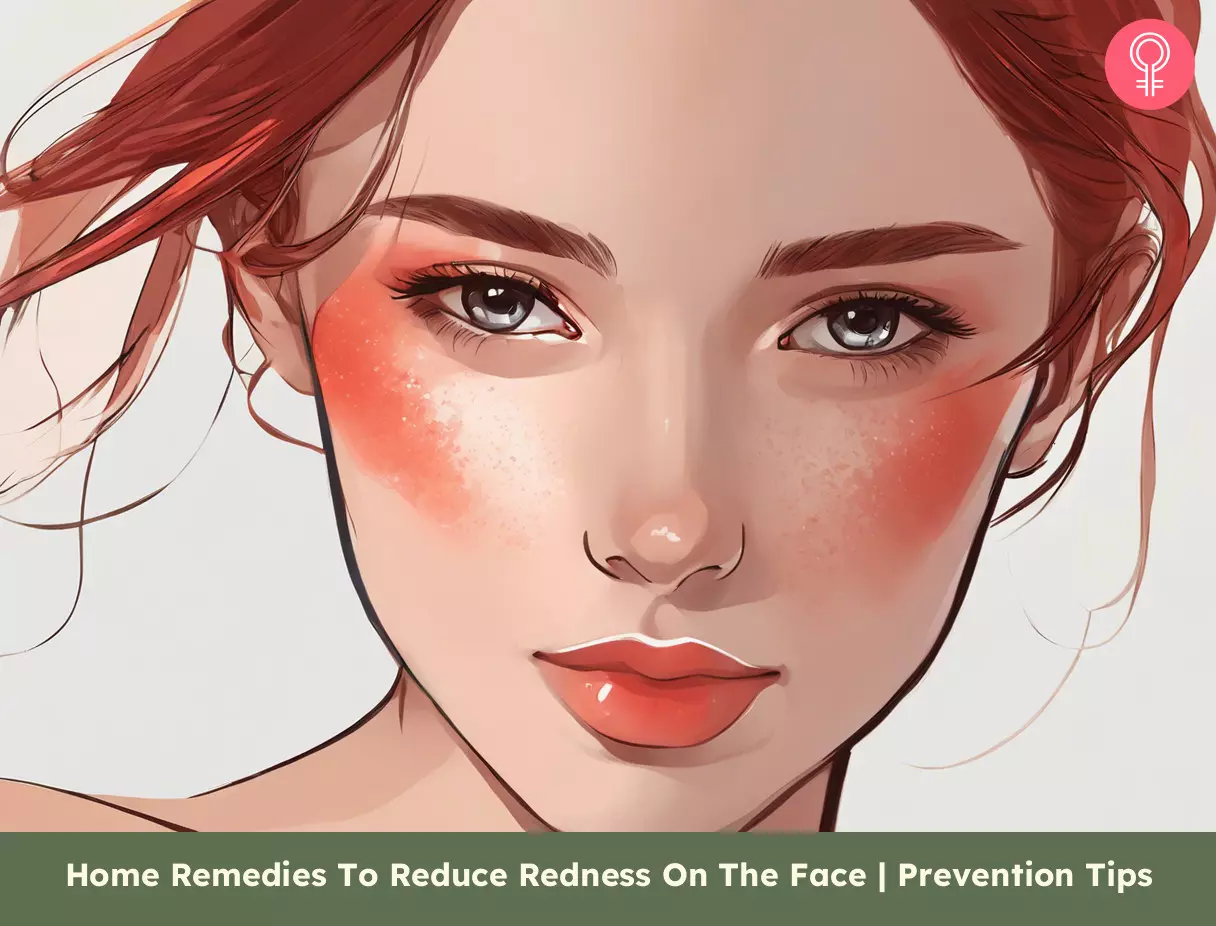
Image: Stable Diffusion/StyleCraze Design Team
Red cheeks can be caused by a variety of factors. Learn from from a certified dermatologist how to get rid of redness on your cheeks and achieve a healthy, glowing complexion.
Personal Experience: Source
StyleCraze's articles are interwoven with authentic personal narratives that provide depth and resonance to our content. Below are the sources of the personal accounts referenced in this article.
i. What I did to clear up rosacea and heal a skin issuehttps://medium.com/know-thyself-heal-thyself/what-i-did-to-clear-up-rosacea-and-heal-a-skin-issue-d18861743f88
References
Articles on StyleCraze are backed by verified information from peer-reviewed and academic research papers, reputed organizations, research institutions, and medical associations to ensure accuracy and relevance. Read our editorial policy to learn more.
- The Rosacea-specific Quality-of-Life instrument (Ros Qol):Revision and validation among Chinese patients, PLoS One.
https://journals.plos.org/plosone/article/file?id=10.1371/journal.pone.0192487&type=printable - Medical Management of Facial Redness in Rosacea, ScienceDirect.
https://www.sciencedirect.com/sdfe/pdf/download/eid/1-s2.0-S0733863517301687/first-page-pdf - Honey: A Therapeutic Agent for Disorders of the Skin, Central Asian Journal of Global Health, US National Library of Medicine, National Institutes of Health.
https://www.ncbi.nlm.nih.gov/pmc/articles/PMC5661189/ - Evidence based medical use of aloe vera extracts, short review of literature, International Journal of Research in Medical Sciences, ResearchGate.
https://www.researchgate.net/publication/320098633_Evidence_based_medical_use_of_aloe_vera_extracts_short_review_of_literature - Chamomile: A herbal medicine of the past with bright future, Molecular Medical Reports, US National Library of Medicine, National Institutes of Health.
https://www.ncbi.nlm.nih.gov/pmc/articles/PMC2995283/ - Exploring cucumber extract for skin rejuvenation, African Journal of Biotechnology.
https://academicjournals.org/article/article1380726732_Akhtar%2520et%2520al.pdf - Diet and rosacea: the role of dietary change in the management of rosacea, Dermatology Practical and Conceptual, US National Library of Medicine, National Institutes of Health.
https://www.ncbi.nlm.nih.gov/pmc/articles/PMC5718124/ - Beneficial effects of green tea: A literature review, Chinese Medicine, US National Library of Medicine, National Institutes of Health.
https://www.ncbi.nlm.nih.gov/pmc/articles/PMC2855614/ - Petrolatum: Barrier repair and antimicrobial responses underlying this “inert” moisturizer, The Journal of Allergy and Clinical Immunology, US National Library of Medicine, National Institutes of Health.
https://pubmed.ncbi.nlm.nih.gov/26431582/ - Effect of Lavender (Lavandula angustifolia) Essential Oil on Acute Inflammatory Response, Evidence-Based Complementary and Alternative Medicine, US National Library of Medicine, National Institutes of Health.
https://www.ncbi.nlm.nih.gov/pmc/articles/PMC5878871/ - In vitro evaluation of antifungal activity of monolaurin against Candida albicans biofilms, PeerJ, US National Library of Medicine, National Institutes of Health.
https://www.ncbi.nlm.nih.gov/pmc/articles/PMC4924139/ - Cold-water immersion and other forms of cryotherapy: physiological changes potentially affecting recovery from high-intensity exercise, Extreme Physiology and Medicine, US National Library of Medicine, National Institutes of Health.
https://www.ncbi.nlm.nih.gov/pmc/articles/PMC3766664/ - The Role of Topical Brimonidine Tartrate Gel as a Novel Therapeutic Option for Persistent Facial Erythema Associated with Rosacea, Dermatology and Therapy, US National Library of Medicine, National Institutes of Health.
https://www.ncbi.nlm.nih.gov/pmc/articles/PMC4580655/ - Azelaic acid. A review of its pharmacological properties and therapeutic efficacy in acne and hyperpigmentary skin disorders. Drugs, US National Library of Medicine, National Institutes of Health.
https://pubmed.ncbi.nlm.nih.gov/1712709/ - Metronidazole, US National Library of Medicine, National Institutes of Health.
https://www.ncbi.nlm.nih.gov/books/NBK539728/ - Safety and efficacy of doxycycline in the treatment of rosacea, Clinical, Cosmetic and Investigational Dermatology, US National Library of Medicine, National Institutes of Health.
https://www.ncbi.nlm.nih.gov/pmc/articles/PMC3047926/ - An update on the treatment of rosacea, Australian Prescriber, US National Library of Medicine, National Institutes of Health.
https://www.ncbi.nlm.nih.gov/pmc/articles/PMC5828925/ - Rosacea Management, Skin Appendage Disorders, US National Library of Medicine, National Institutes of Health.
https://www.ncbi.nlm.nih.gov/pmc/articles/PMC5096126/ - Oral Vitamin D Rapidly Attenuates Inflammation from Sunburn: An Interventional Study, US National Library of Medicine, National Institutes of Health.
https://pubmed.ncbi.nlm.nih.gov/28576736/ - The Roles of Vitamin C in Skin Health, US National Library of Medicine, National Institutes of Health.
https://www.ncbi.nlm.nih.gov/pmc/articles/PMC5579659/
Read full bio of Dr. Nicholas Jones
Read full bio of Shaheen Naser
Read full bio of Anjali Sayee
Read full bio of Monomita Chakraborty






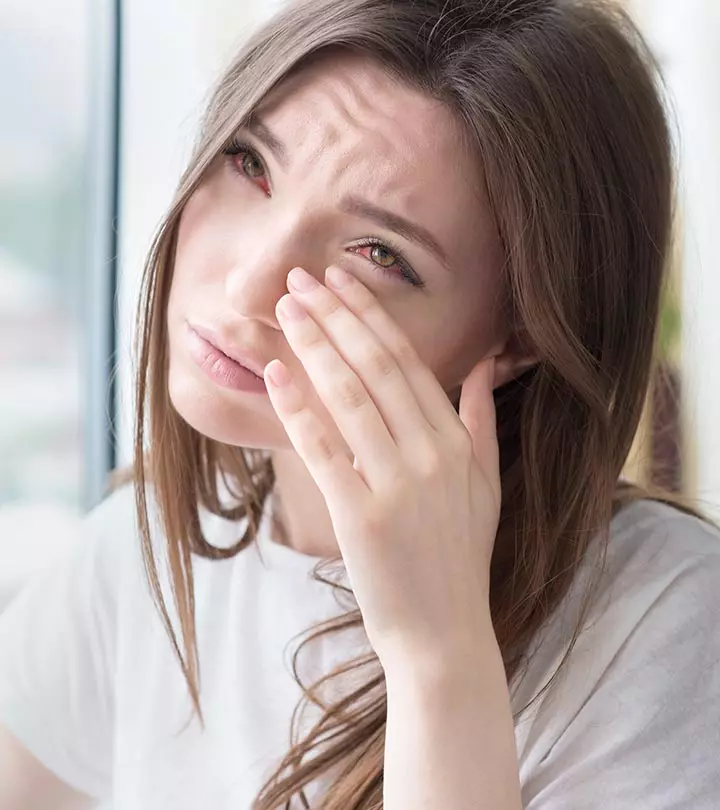
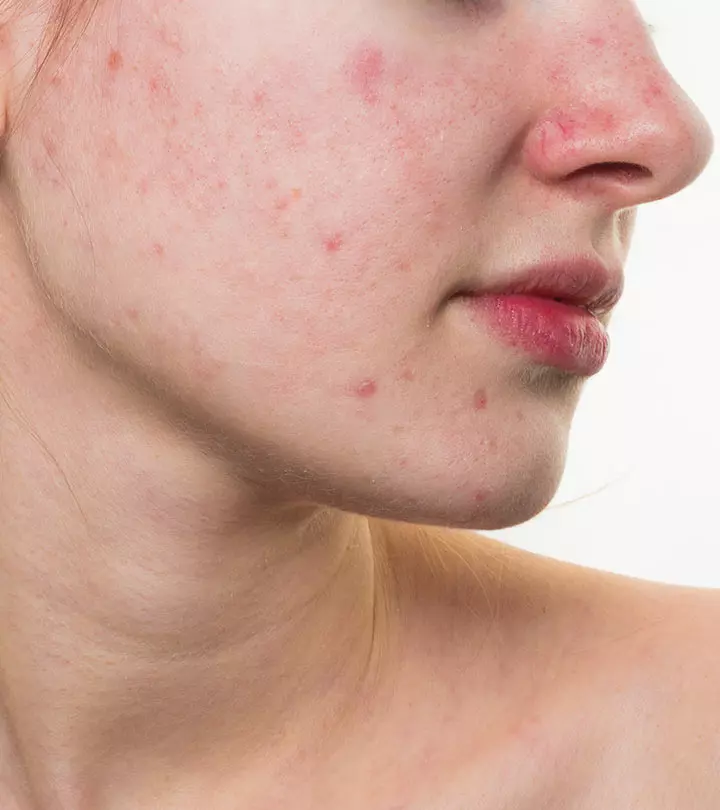
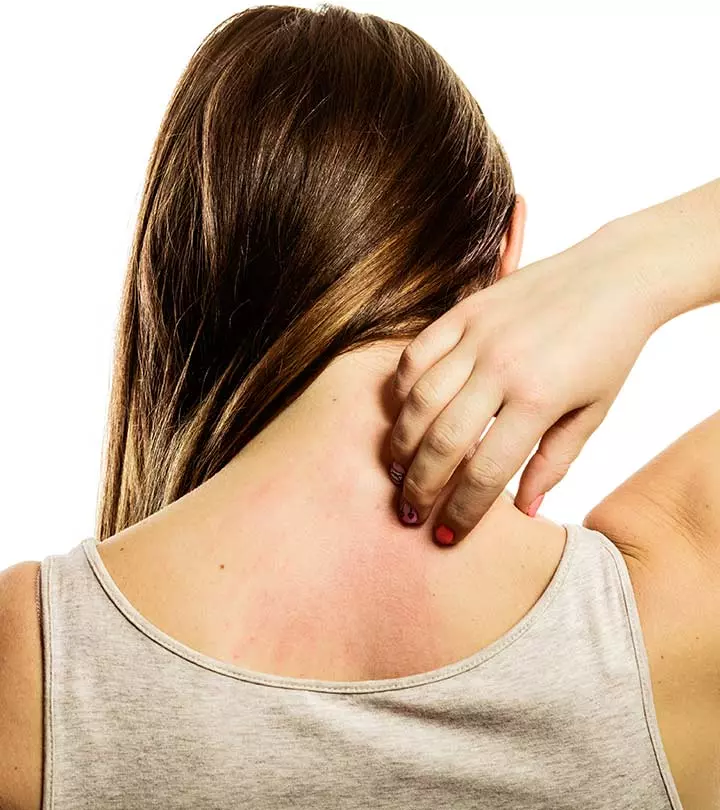
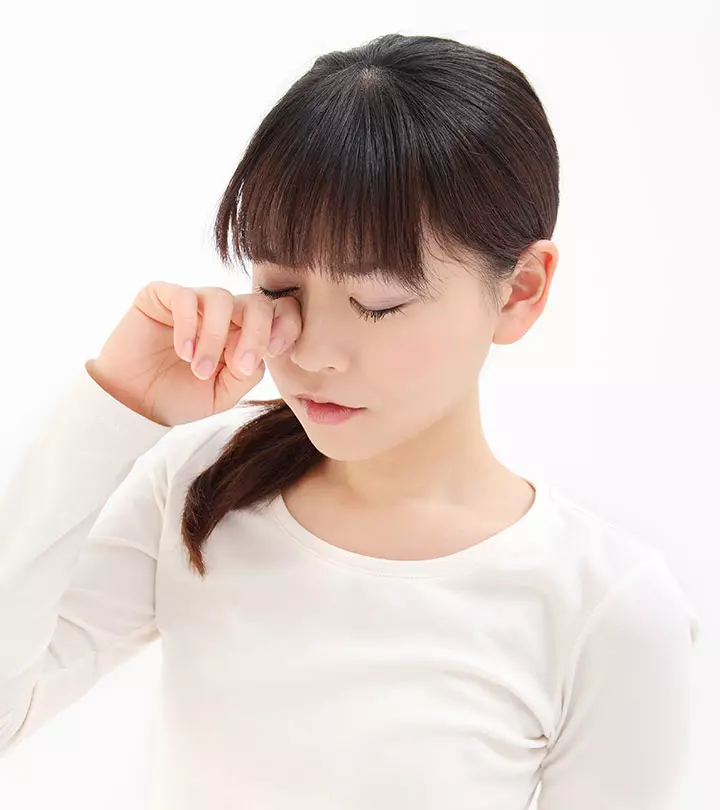
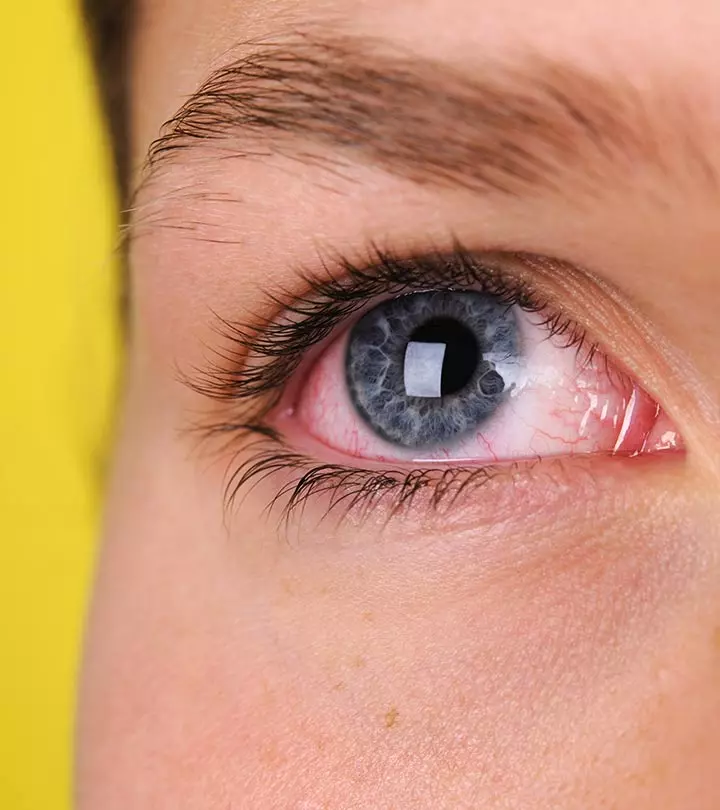
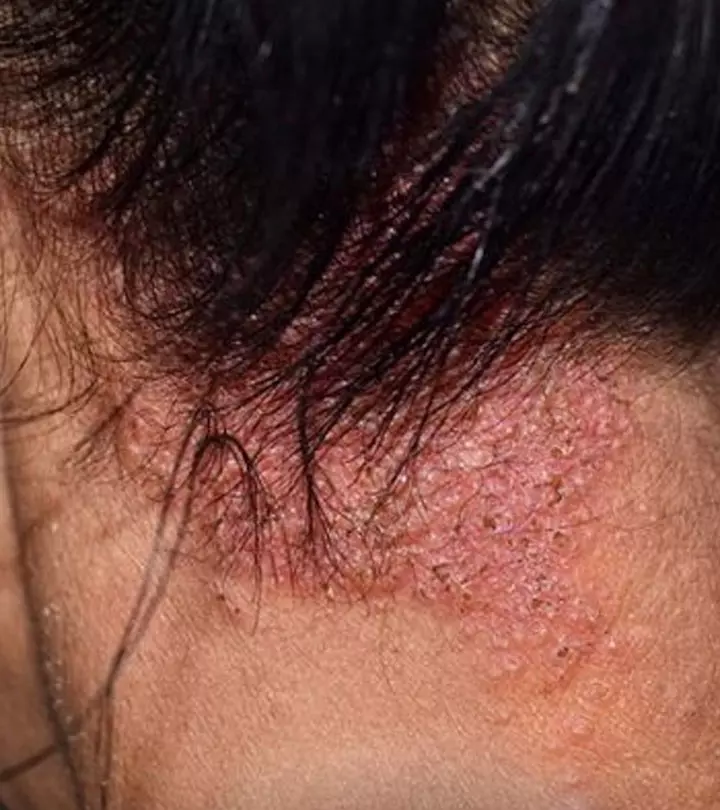
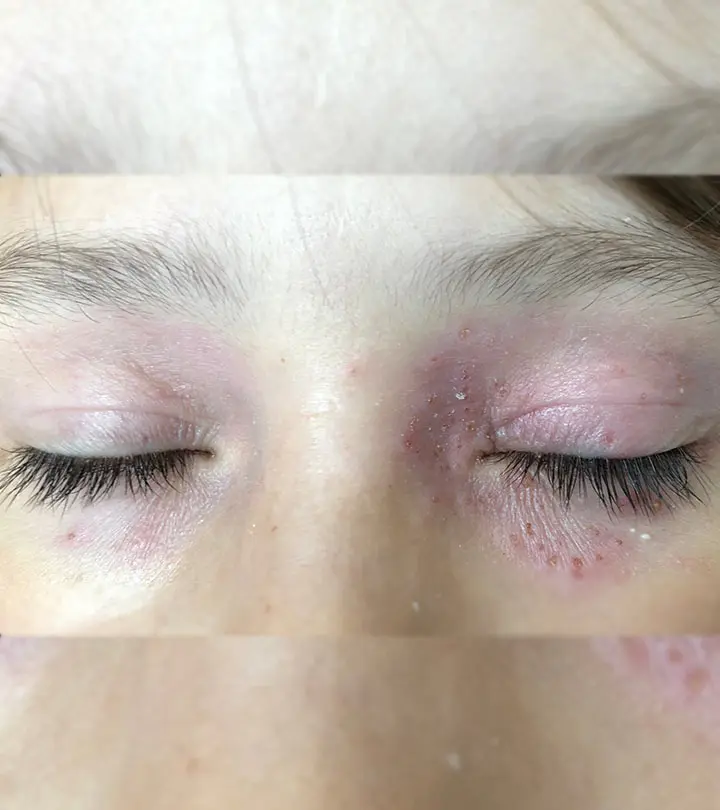


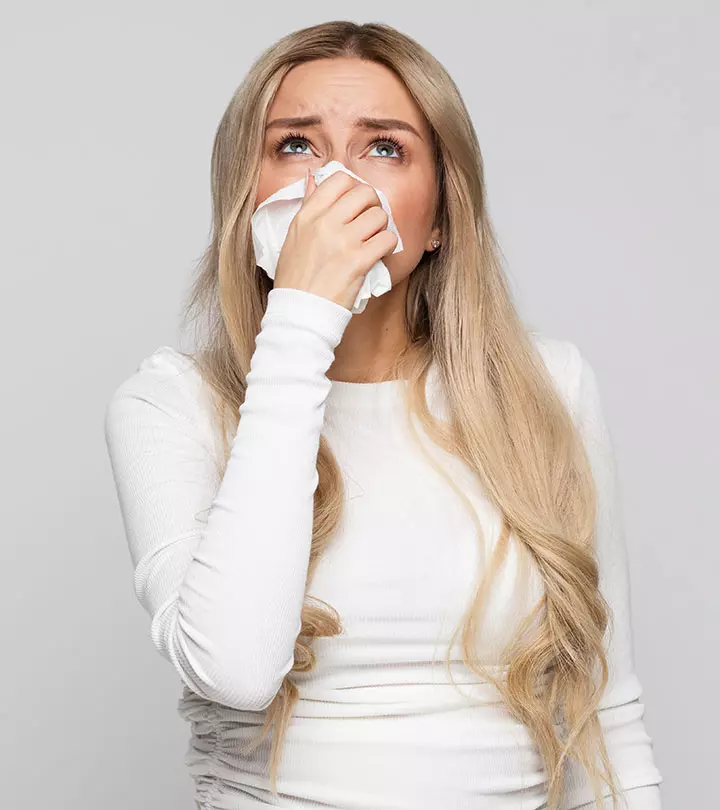


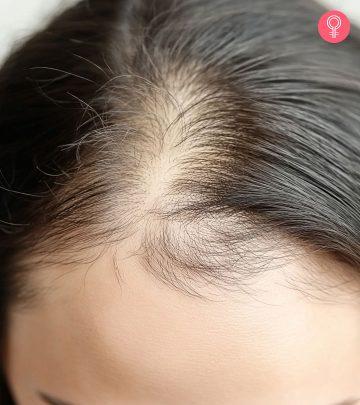

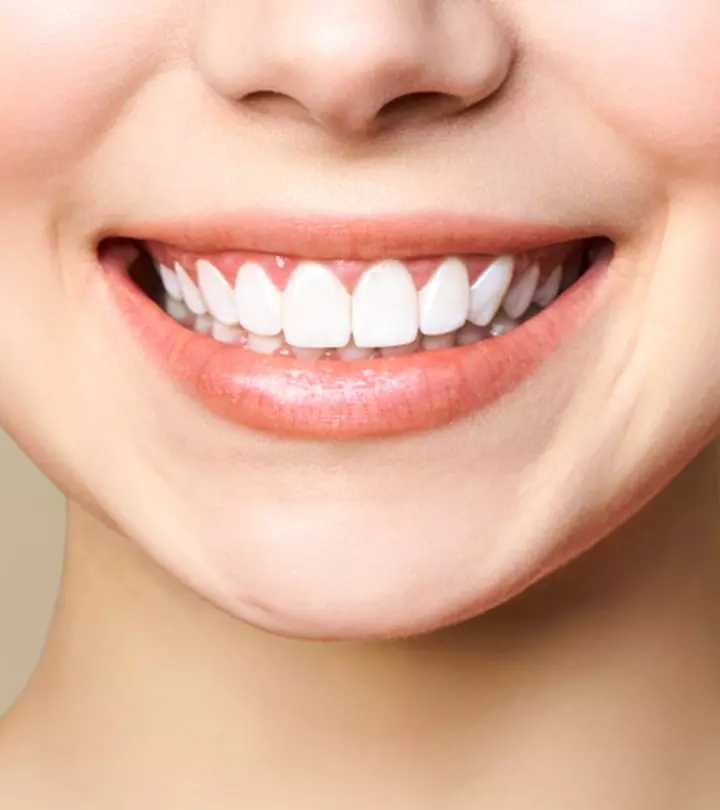
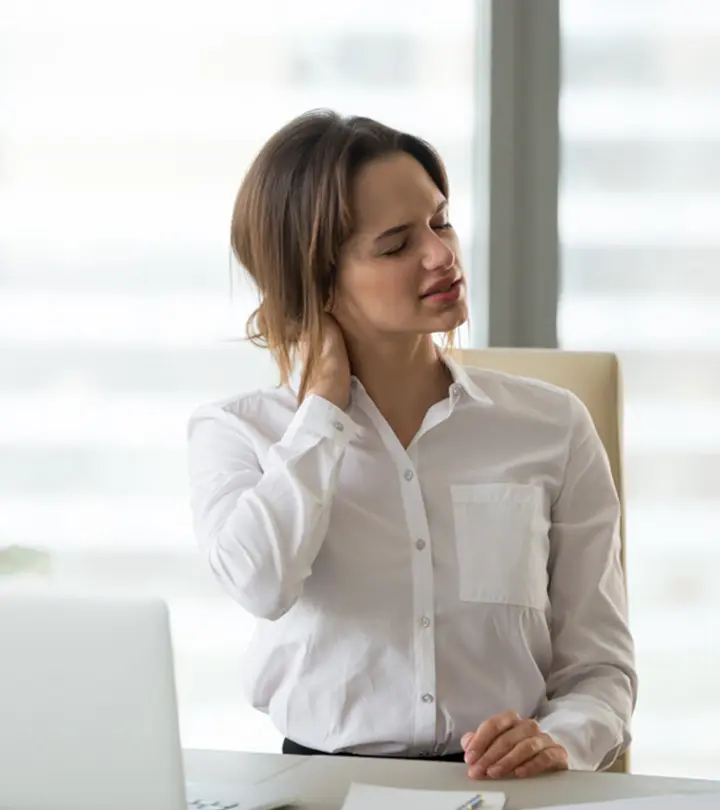
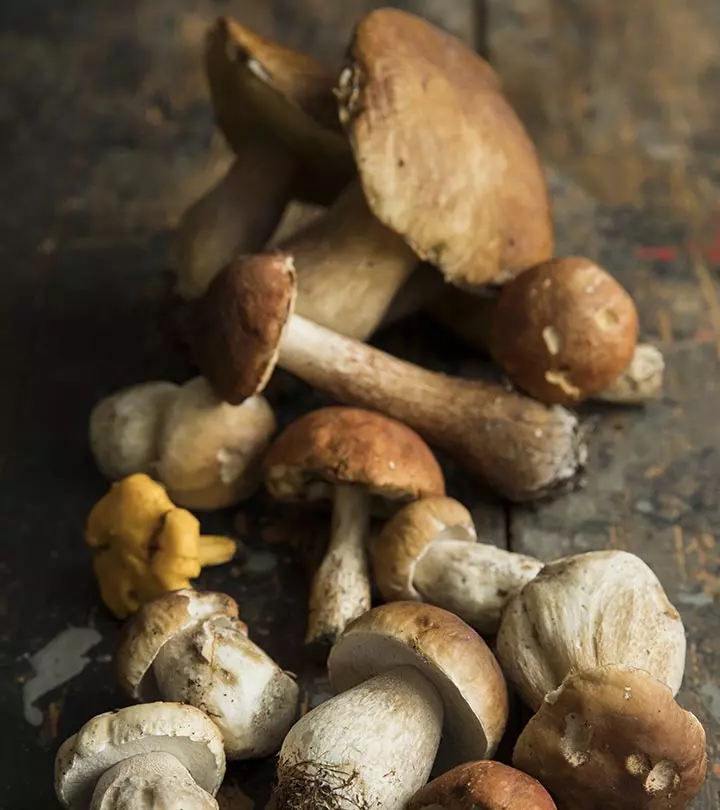
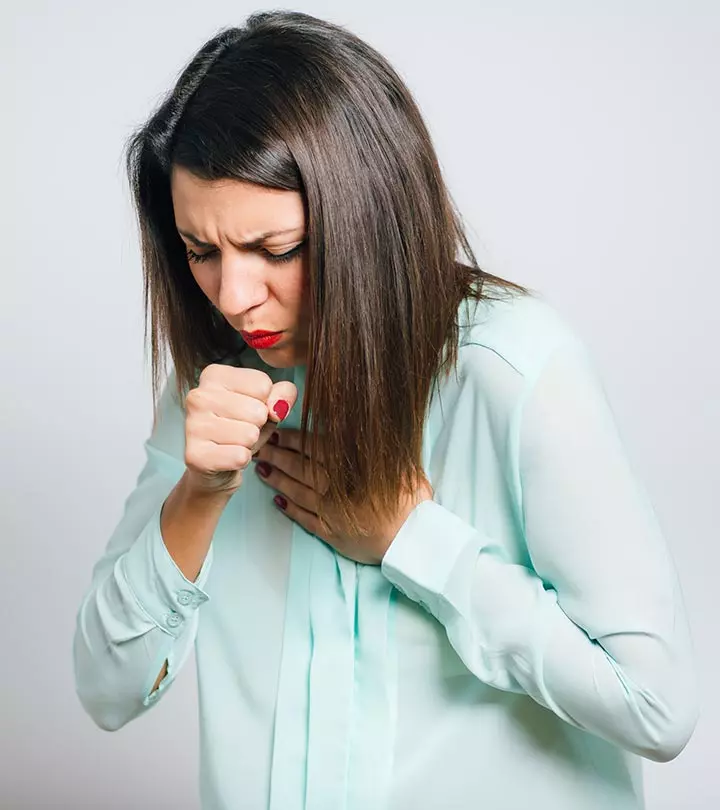

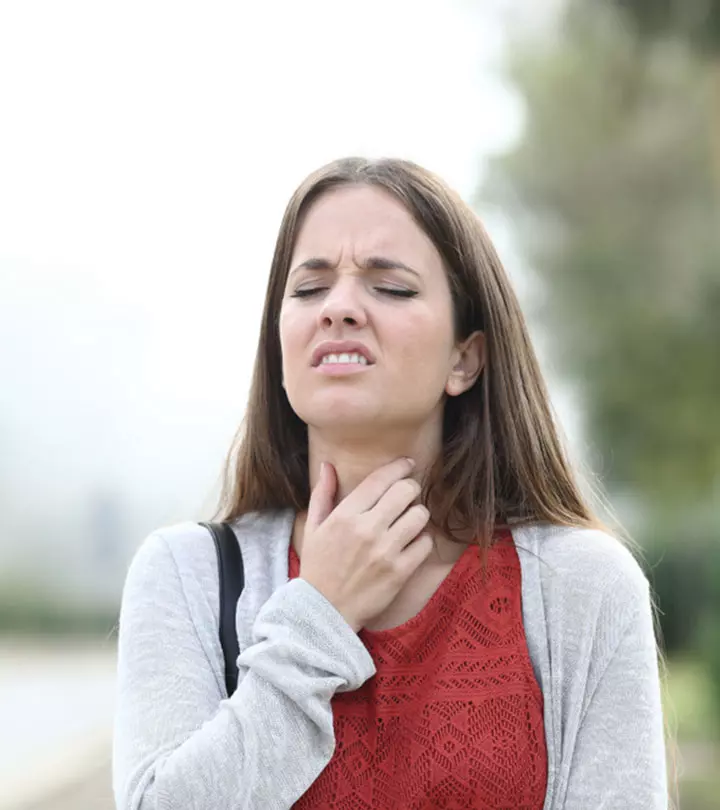

Community Experiences
Join the conversation and become a part of our empowering community! Share your stories, experiences, and insights to connect with other beauty, lifestyle, and health enthusiasts.